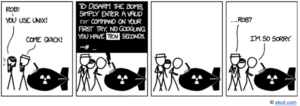Manage Cohesity Workflows with Ansible Tower
Many developers who turn to Ansible to manage their IT infrastructure and application deployments find themselves wasting a lot of time toggling between applications. When you integrate your Cohesity Ansible Role with the Red Hat Ansible Tower, you can streamline all of those tasks in a single graphical interface.
Having a user-friendly and intuitive GUI to be able to perform operations can be really helpful. A good GUI makes the barrier of entry lower and can help onboard new customers and users. This is why visual design is generally a big part of any tech product.
Ansible is an open source software-provisioning, configuration-management, and application-deployment tool. Ansible does not come with a default GUI and, while you can use a variety of open-source GUIs to manage Ansible operations, they are all limited to a very basic set of supported operations.
Red Hat Ansible Tower, previously called the AWX project, is the fix to this problem. It is a comprehensive web-based UI for Ansible, containing the most important Ansible features, especially those that render better as graphical rather than text-based output, such as real-time node monitoring. It acts as a web console and REST API for automating all your Ansible operations across teams, organizations, and the whole enterprise.
We will use this blog to introduce Cohesity Ansible roles integration with Red Hat Tower with a demo which will go over a sample Cohesity workflow using Ansible Tower.
In our previous blog post, we saw how we can use Cohesity Ansible roles with ManageIQ to automate various workflows and we also saw an example where we performed a VMware recovery workflow using Cohesity DataPlatform. You can also integrate Red Hat Tower with ManageIQ, which allows you to manage those Tower operations from the ManageIQ console.
To learn more about Red Hat Ansible Tower integration with ManageIQ, I suggest you check out the ManageIQ documentation to see how you can get started.
Demo
The video below takes you through a generic NAS endpoint protection workflow using Tower and Cohesity DataPlatform. Visit the Ansible Integration Landing page to check out all the available workflows.
The video goes through the following sections:
- Import Ansible playbooks as a Tower Project from Github.
- Create an Inventory.
- Create a Job template and a Tower Workflow.
- Execute the Workflow (Register NAS endpoint → Protect the endpoint → Recover a file)
See our Ansible Integration – Get Started video for an introduction and then explore the full playlist on Cohesity Ansible Integration
We are constantly adding more and more sample workflows on our Github repository. Learn more in our Hello Cohesity Developers blog and, as always, we welcome your contributions to our public Github repository.

















